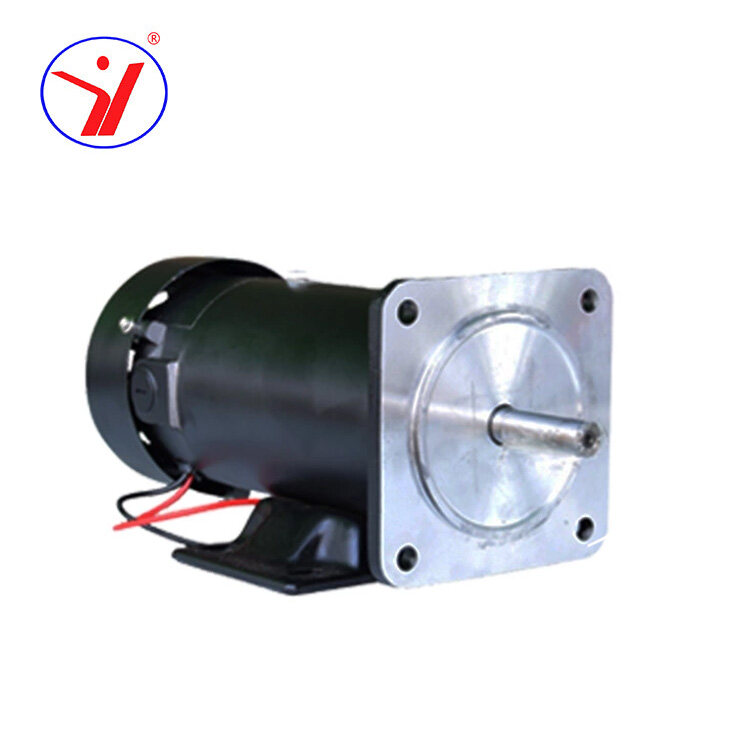Exploring the Nuances of Synchronous and Asynchronous Motors
1. Definition
1.1 Synchronous Motor
Synchronous motors not only maintain synchronization with the AC power supply but also exhibit remarkable precision in maintaining a constant speed. These motors are prevalent in applications requiring meticulous timing, such as in the aviation industry, where synchronization is critical for radar systems.
1.2 Asynchronous Motor
Asynchronous motors, known for their reliability, simplicity, and cost-effectiveness, operate at a speed slightly below the synchronous speed. Their widespread use extends to various domains, including household appliances like washing machines and refrigerators.
2. Key Differences
2.1 Fundamental Differences
The fundamental divergence between synchronous and asynchronous motors lies in their synchronization behavior. Synchronous motors are akin to synchronized dancers, moving in harmony with the rhythm of the power supply, while asynchronous motors, like freestyle performers, exhibit a slight time lag.
2.2 Speed Control, Efficiency, and Applications
The significance of speed control is paramount in applications such as robotics, where synchronous motors shine due to their ability to maintain precise speeds. Conversely, asynchronous motors find favor in scenarios like material handling systems, where variable speeds accommodate diverse operational demands.
3. Advantages and Disadvantages
3.1 Synchronous Motors
Synchronous motors, with their inherent ability to uphold constant speed, play a vital role in fields like telecommunications and broadcasting, ensuring accurate timing in communication systems. Despite their efficiency, they may entail higher manufacturing costs.
3.2 Asynchronous Motors
Asynchronous motors, celebrated for their cost-effectiveness, versatility, and durability, thrive in applications where speed variation is acceptable. Their deployment in conveyor systems within manufacturing plants showcases their adaptability to diverse load conditions.
3.3 Motor Selection Scenarios
In scenarios demanding unwavering speed, such as in the precision machinery used in medical equipment, synchronous motors become the preferred choice. Conversely, asynchronous motors cater to industries like textiles, where adapting to variable production speeds is essential.
4. Applications
4.1 Synchronous Motor Applications
Synchronous motors are integral to the functioning of synchronous clocks, precision instrumentation in laboratories, and even astronomical equipment. Their role extends to satellite communication systems, where precise synchronization aids in signal transmission.
4.2 Major Asynchronous Motor Applications
Asynchronous motors find their place in the heart of manufacturing processes, driving conveyor belts and powering ventilation systems. Furthermore, their inclusion in household appliances, like fans and blenders, exemplifies their ubiquity in daily life.
5. Speed Control Mechanisms
5.1 Synchronous Motor Speed Control
Achieving speed control in synchronous motors often involves intricate control systems, making them suitable for applications demanding stringent speed requirements. Their application in robotics and CNC machines underscores the need for precision.
5.2 Asynchronous Motor Speed Control
Asynchronous motors implement simpler speed control mechanisms, often relying on variable-frequency drives. This simplicity enhances their versatility in applications where speed adjustments are frequent, such as in material handling systems.
5.3 Impact of Speed Control on Motor Performance
The meticulous nature of synchronous motor speed control ensures stability, making it indispensable in scenarios where precision is non-negotiable. Asynchronous motors, with their adaptability to dynamic speed changes, showcase their prowess in environments with varying operational demands.
6. Efficiency and Energy Consumption
6.1 Efficiency Comparison
Synchronous motors generally boast higher efficiency due to their fixed-speed operation, making them ideal for applications with stringent energy consumption constraints. This efficiency is particularly crucial in energy-intensive industries.
6.2 Differences in Energy Consumption
Energy consumption differences between synchronous and asynchronous motors arise from factors such as motor size, load conditions, and the operational requirements of the specific application.
7. Maintenance and Reliability
7.1 Maintenance Requirements
Synchronous motors, with their intricate components, may demand more meticulous maintenance procedures. In contrast, asynchronous motors, with their simpler design, often require less frequent maintenance, making them attractive in applications where downtime must be minimized.
7.2 Factors Affecting Reliability
Reliability considerations involve factors like operating conditions, environmental factors, and adherence to recommended maintenance practices. The proactive management of these factors contributes to the longevity and reliability of both synchronous and asynchronous motors.
7.3 Considerations for Motor Selection
Selecting the appropriate motor involves weighing maintenance requirements against operational needs. In situations where minimal maintenance is imperative, such as in remote industrial setups, asynchronous motors emerge as a practical choice.
In essence, the "unterschied synchron asynchron motor" encapsulates a rich tapestry of engineering principles, applications, and trade-offs. The interplay between precision and adaptability, energy efficiency, and maintenance considerations underscores the importance of a nuanced understanding when choosing between synchronous and asynchronous motors in diverse industrial landscapes.


